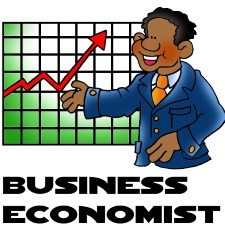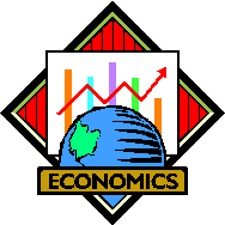Important Theories of Business Cycle
Table of Contents
Theories of Trade Cycle / Business Cycle
Economists have identified different causes for the occurrence of trade cycle in an economy and formulated various theories of trade cycles. A systematic study of business cycles, however, is a relatively recent development. Most of the important contributions to the theory of business cycle were made in the first half of the twentieth century though business cycles has taken place throughout the nineteenth century.

The classical economists, Adam Smith, Mill, Malthus and Ricardo, have devoted little attention to the causes of business cycles. The classical school believed that Say’s law, i.e.,
“Supply creates its own demand,”
was a valid representation of the world economic behavior and that unemployment appears only if wages and interest rates are inflexible. Market forces, what Adam Smith called “invisible hand” would by themselves maintain stability in the economy. Between 1890 and first World War, however, a number of important contributions were made to the trade cycle theory.
Although many important contributions were made to the theory of business cycle prior to the Great Depression, the study of business cycle still remained outside the general economic theory. It was Keynes, who provided a general theoretical framework, in which the theory of business cycle could be interwoven. In his General Theory he provided standard tools for analyzing the economic fluctuations though he himself had said little about the cause of cyclical fluctuations.
Hicks has remarked that Keynesian economics had done all for understanding of business fluctuations but has left out the analysis of business cycle itself. In the post-Keynesian era, the main contributors to the cycle theory include Metzler, Harrod, Samuelson, Kaldor, Hicks, Goodwin and Duesanberry.
The following theories are important contributions. For the sake of clarity, the theories can be classified as
Non-monetary theories
These theories emphasis non-monetary causes. The non-monetary theories are:
- Stanley Jevon’s sunspot theory.
- Pigou’s psychological theory.
- Socialist’s over production theory.
- Douglas and Hobson’s over-saving theory/under consumption theory.
- Schumpeter’s innovation theory.
- Cobweb theorem.
Monetary theories
These asserts monetary causes. The monetary theories of trade cycle include,
- Hawtrey’s theory of business cycle.
- Hayek’s over investment theory.
- Keyne’s theory of business cycle and
- Hick’s’theory of business cycle.
In addition, there are good number of theories on business cycle propounded by economists. Here, we can discuss. only a few important theories briefly.
Sun spot theory or climatic theory
This theory advocated by Jevons and Moore states that good climate and bad climate are responsible for good and bad harvest and consequently economies enjoy periods of prosperity and adversity. The climatic variations are supposed to be caused by the spots in the sun and hence the name sun spot theory. Of course, this theory is not accepted in modern times, as the trade cycles is not restricted to agricultural sector alone or to agricultural countries alone. Even highly industrialized countries undergo the experience of trade cycles.
Psychological theory
This theory was propounded by Pigou, Beveridge and others, It is based on the psychological feeling of optimism and pessimism in businessmen. This results in boom and depression in the economy. The wave of optimism creates herd psychology and businessmen undertake business activity enthusiastically. This theory is only partly true. Though psychological aspects give momentum to an activity, the theory does not explain how the boom or slump is initiated. The theory fails to explain as to how a depression starts and how a recovery begins.
Hawtrey’s theory or Monetary theory
According to Hawtrey, “Trade cycle is purely a monetary phenomenon” and he strongly advocated that changes in the flow of money are exclusively responsible for the ranges in economic activity which in turn create boom or depression.
The basic cause of boom or depression according to Hawtrey is the changes in the volume of money which are brought about by the changes in the rate of interest. A reduction of rate of interest by the banking institutions would enthuse the businessmen to borrow more and more and expand business activity. If the rate of interest is increased, borrowings get reduced and as such the business activities get reduced. In short, Hawtrey’s theory is nothing but inflation and deflation created by the rate of interest.
This theory holds good only when the monetary system is under “Gold standard” where the money supply would be rigidly fixed on the basis of gold stock. But in modern days, in the absence of gold standard, the theory has become very weak. Further, borrowing and investments will not depend upon the rate of interest and it could not be the cause of prosperity and depression. If that be the case, controlling a boom and solving a depressionary trend would lend an easy monetary solution of contracting and expanding money through the rate of interest. This may be one of the causes and not the only cause influencing trade cycle.
Keyne’s theory of trade cycle
Keynes did not formulate a separate theory of trade cycle, but he has given it as a by-product of his main theory of Income and employment propounded in the “General theory”.
According to Keynes, trade cycle may be regarded
as being occasioned by a cyclical change in the marginal efficiency of capital though complicated and often aggravated by associated changes in the other significant short period variables of the economic system.
Thus, the primary cause, of cyclical fluctuations is the marginal efficiency of capital (MEC) i.e. changes in the rate of profit on current investment outlay and also due to changes in the rate of interest. According to Keynes, MEC forms the vital factor in guiding investment decisions of businessmen. But this factor depends on businessmen’s anticipation of future prospects, i.e. on the psychology of inventors. In such a case, this theory approaches very near to psychological theory.



